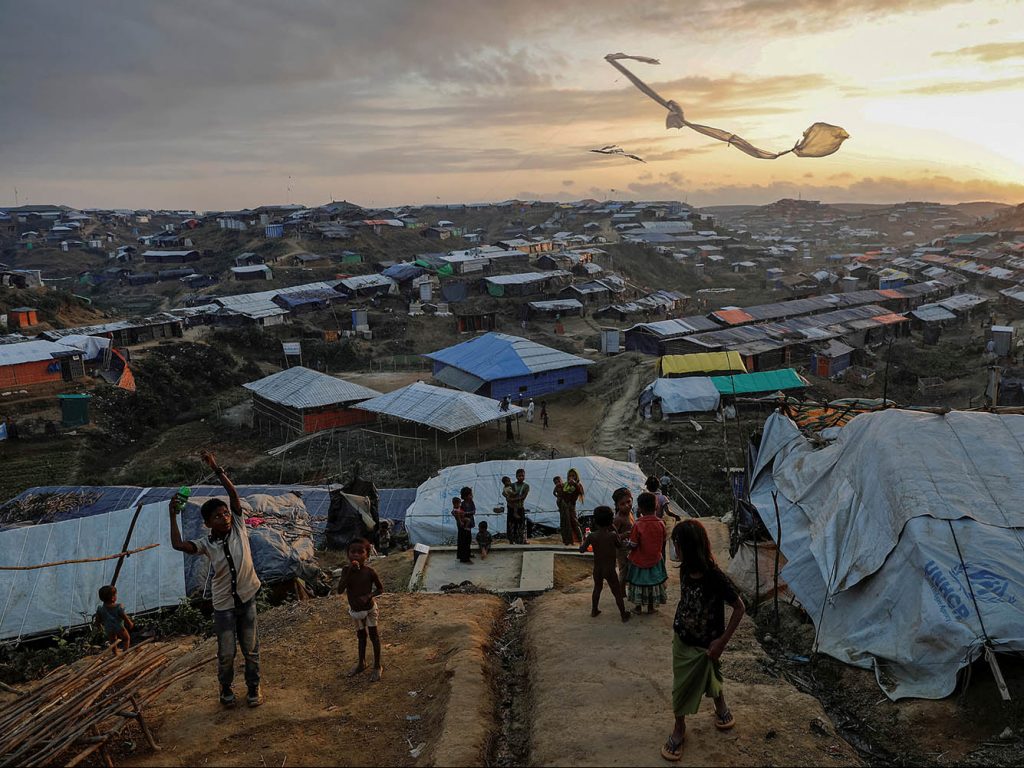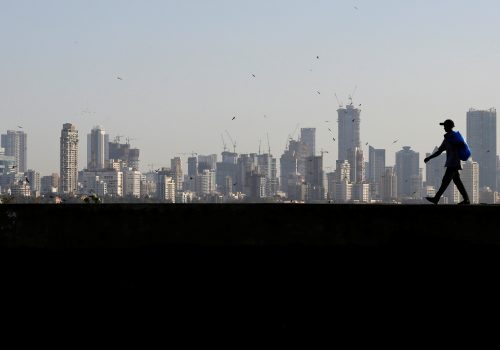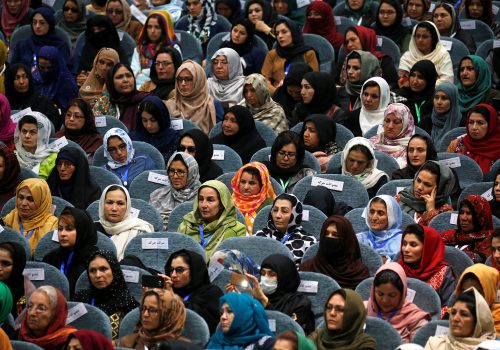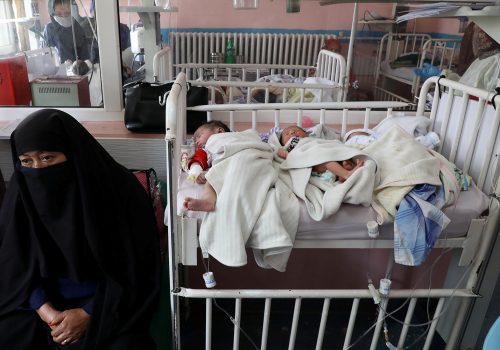While the refugee crises created by the conflict in Afghanistan and the ethnic cleansing of the Rohingyas in Myanmar may appear to be disconnected, they are both part of a major migration upheaval in South Asia that the COVID-19 pandemic has only complicated. Already living on the margins of society, Afghan and Rohingya refugees have been hit particularly hard by COVID-19. Host countries and the international community need to do more to help alleviate the unique challenges that the pandemic has caused for both of these populations.
COVID-19 and Afghan refugees
Before the pandemic, Afghan refugees in Pakistan already faced disadvantages in access to education, healthcare, banking and financial resources, and property. They have also been subjected to police brutality and arbitrary detention by security forces. While Pakistan does technically have birth right citizenship, this right has been routinely denied to the children of Afghan refugees born in Pakistan, and Prime Minister Imran Khan backed away from his original plan to revise this policy due to political backlash. Given the additional uncertainty around whether these children may be granted Afghan citizenship (many have never set foot in Afghanistan), the risk of statelessness is enormous and carries serious repercussions for the already dire legal and human rights situation faced by Afghan refugees.
The COVID-19 pandemic has only exacerbated these challenges. Though Islamabad lifted its lockdown measures, the initial shutdown caused major disruptions to the day labor sector in which many Afghans work. Restrictions on public gatherings limit already scarce economic opportunities, demonstrated by the closing of a major vegetable market in Islamabad that employed many of the Afghans residing in a nearby refugee camp. Additionally, the constant threat of deportation continues to have a profound effect on the psychological health of Afghan refugees who are now dealing with the additional anxiety of pandemic-related uncertainty. Finally, the initial closing of key Afghanistan-Pakistan border crossings meant that asylum seekers fleeing violence in Afghanistan would find seeking refuge in Pakistan much more difficult and dangerous, making them significantly more vulnerable to human traffickers and exploitation by criminal networks.
What should be done
Afghan refugees and asylum seekers need more assistance from Pakistan, its allies, and the international community to weather the COVID-19 pandemic. Concrete policy reform could do much to improve the welfare of this community:
- Islamabad should create a new legal status for the children of Afghan refugees born in Pakistan. In the hopes of attaining broader political support, it would not go so far as to offer full citizenship, but should move one step beyond refugee legal status—which carries major limitations on property and education, among others—to give children a greater step forward. This legal status would alleviate statelessness, lift restrictions on property and purchasing of goods, educational access, and others, but would not grant voting rights, a Pakistani passport, or related privileges reserved for citizens.
- Pakistan’s COVID-19 relief bill as well as the new budget announced earlier this summer make no explicit mention of bolstered support for Afghan refugees. As such, Islamabad should pass a new, highly directed COVID-19 relief package, aimed at supporting Afghan refugees financially via immediate cash transfers, similar to the original relief bill. Given their role in the conflict—which has greatly exacerbated the refugee crisis between Afghanistan and Pakistan—the United States and NATO should shoulder a significant portion of this financial burden.
- Islamabad should use its influence with Taliban leadership to increase their receptiveness to an eventual negotiated agreement with Kabul that takes direct, granular action towards repatriating and resettling Afghan refugees in a dignified and safe manner. This would put a stop to forced deportations of Afghan refugees and continue to include the $400 cash payments that repatriating Afghan refugees already receive from the United Nations High Commissioner for Refugees (UNHCR) upon leaving Pakistan.
- The United States, NATO, and the international community—as well as international financial institutions such as the World Bank and the International Monetary Fund (IMF)—should scale up their support for Afghanistan’s COVID-19 response with few strings attached. Though the World Bank approved a COVID-19 support grant for $400 million and the IMF one for $220 million earlier this year, this funding is primarily aimed at macroeconomic cushioning and government fiscal reform, rather than service delivery to stop the spread of the virus and support everyday Afghans. This internationally subsidized service delivery—which would ideally accompany increased government social spending—should focus on cash payments, medical supplies for healthcare facilities such as personal protective equipment (PPE), masks for the general public, hand sanitizer and hygiene kits, and others.
COVID-19 and Rohingya refugees
The COVID-19 situation has also created challenges for the already marginalized Rohingya community. Most Rohingyas live in the refugee camps in Cox’s Bazar. Each shack in its camps is just under ten square meters and typically houses five to six people, giving the refugee camps in Cox’s Bazar a population density three times that of Manhattan. While the government of Bangladesh—with the help of international non-governmental organizations (INGOs)—announced social distancing guidelines, the highly restrictive living conditions make it practically impossible to follow such instructions.
The first case of COVID-19 within the camps was confirmed on May 15. According to a study conducted by Yale University, 25 percent of respondents in the camps reported experiencing at least one common COVID-19 symptom—fever, dry cough, or fatigue. Nevertheless, the refugees are often reluctant to reveal their symptoms as they fear that suspected cases will result in forced separation from their families. As such, instead of going to testing centers, many are going to pharmacies in search of medication for self-treatment.
According to a report from August 24, only 3,176 tests have been conducted among the Rohingya refugees residing in Bangladesh. Seventy-nine came back positive, indicating a 2 percent infection rate. This is much lower than the rate of the host population which is approximately 16 percent. Yet, the death rate for the Rohingya refugees is 8 percent compared to 2 percent for the Bangladeshi host community. Moreover, existing health care facilities are woefully inadequate to handle a severe public health crisis. As of August 16, thirteen Severe Acute Respiratory Illness Isolation and Treatment Centres (SARI ITCs) have been ready to receive patients. While there are 490 SARI ITC beds with an additional 279 beds on standby and thirty-four isolation beds in all of the Rohingya refugee camps combined, there are only two ventilators in the whole of Cox’s Bazar.
Some NGO workers argue that the only safety measures refugees can realistically implement is to stay at home, wash their hands, and maintain good hygiene habits to the greatest extent possible. That said, there have been some positive developments: on the August 28, 3G and 4G internet was restored in the camps due to pressure from the international community, following the government of Bangladesh’s shutdown in September 2019 citing security concerns. As such, it is now easier for the refugees to stay up to date on the latest COVID-19 news.
What should be done
The challenges facing the Rohingya refugees in Bangladesh have been exacerbated by the pandemic and the international community should take several tangible steps to provide assistance:
- The international community must understand the severity of this crisis and follow on its commitments to provide timely financial support for Bangladesh and the Rohingya refugees themselves. Up to this point, international community has not done enough. As of August 24, 2019, the international community had only provided $330 million out of the promised $920 million for that year to the government of Bangladesh for the financial resources needed to manage this crisis. At the minimum, this pledge should be fulfilled.
- The international community should place immediate sanctions on Myanmar. If repatriation of Rohingyas is to eventually occur, experts believe that only a strong stance by regional and global powers can help pressure Myanmar to change its behavior. The support of regional powers such as China is crucial as it has big investments in Myanmar. India has also stated that it supports Bangladesh on the importance of repatriation, but such support remains largely on paper.
- The continued violence in Rakhine state suggests that repatriation may not be a viable option for many Rohingya. As such, as it is imperative that, in the long run, the international community makes an active effort in resettling Rohingyas elsewhere. Bangladesh can learn from the case of Lhotshampa refugees—approximately hundred thousand of whom lived in refugee camps in southern Nepal in the 1990s—who have now largely been resettled in third countries. Similarly, while millions of Afghan refugees remain today in Pakistan, hundreds of thousands have immigrated to third countries such as the United States, the United Kingdom, and Germany. This shows that an active effort by the international community can partially diffuse refugee crises and provide them with safe alternative living arrangements.
- In the long term, it is imperative that any amendments to Bangladesh’s COVID-19 bill must include the host and local communities in Cox’s Bazar, because the pandemic has aggravated tensions between Rohingya refugees and locals. The pandemic has fuelled further distrust as some host communities perceive that aid groups are favoring the Rohingyas. Additionally, a UN Development Program study last year estimated that the prices for essential goods had increased by fifty percent, while daily wages plummeted by around fifteen percent in Cox’s Bazar. Economic troubles coupled with communal tensions make attending to the needs of Rohingya refugees imperative for Dhaka.
COVID-19 and refugee welfare are intertwined issues that must be addressed as such
While the international community remains hyper-focused on addressing the virus and its associated economic slowdown, Afghan and Rohingya refugees continue to be forced into a life of complete uncertainty as they escape violence in their home countries. Concerted action by the international community and host countries towards mitigating the virus’ disproportionate effects on asylum seekers would immensely improve refugee welfare. Violence and persecution have not stopped during the pandemic, and refugees need direct and sustained support by the international community to help them weather COVID-19.
Rudabeh Shahid is a nonresident senior fellow at the Atlantic Council’s South Asia Center.
Harris Samad is a project assistant at the Atlantic Council’s South Asia Center.
Further reading:
Image: Rohingya refugee children fly improvised kites at the Kutupalong refugee camp near Cox's Bazar, Bangladesh December 10, 2017. REUTERS/Damir Sagolj/File Photo



